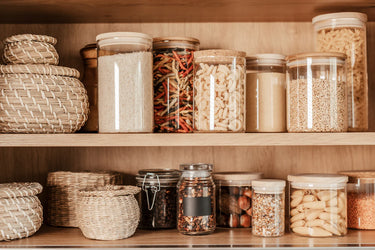4 Classic Italian Pasta Sauces Worth Trying

There’s so much to say about pasta, quite the possibly perfect food. The dish appears to have made its way to Italy from China hundreds of ago—references to pasta appear with increasing regularity in texts, art, and artifacts beginning in the 13th century. Over the 700-plus years since Italian pasta emerged, a vast number of shapes, styles, and sauces have evolved, offering the modern-day pasta lover a veritable cornucopia of ways to enjoy this delicious dish. The possibilities are endless: zany spirals with craggy nooks cozy up with chunky sauces; long, hollow strands of bucatini beg to be slurped; and fat tubes of rigatoni nestle together next to meltingly tender eggplant.
No matter what you choose to do with pasta—even if it’s just butter and parmesan tossed with penne—the result will be delicious. If you’re looking to branch out, why not try a classic sauce from Italy?
These 4 classic Italian pasta sauce recipes below are ones worthy of regular appearances in your kitchen. You’ll find suggested pasta shapes for each sauce, but if you’ve got spaghetti on hand when penne is suggested, try swapping it in. There are no bad pairings.
Pesto alla Genovese
Pesto is a gorgeously green sauce that originally hails from Genoa. Traditionally made with a mortar and pestle, most contemporary recipes for pesto call for using a food processor. The essential ingredients of pesto sauce are basil, olive oil, Parmigiano-Reggiano, garlic, and pine nuts. The resulting sauce is bright and bracing, perfect for slicking long strands of pasta. Trenette is traditional in Liguria, the region where pesto comes from, but you can use linguine, or, frankly, any other shape you want. Hankering for a vegan pesto? No problem, skip the cheese and use nutritional yeast, instead. Start with less than the amount of cheese called for and adjust the amount to taste.
Try this recipe from Serious Eats for classic pesto alla Genovese.
Alfredo
The question “how to make alfredo sauce” can be answered in two ways. There’s the highly popular Americanized version, which results in a cream-based white sauce that’s flavored with garlic and thickened with flour. It’s popular paired with chicken and on pizza. Classic fettuccine all’Alfredo is gaining in popularity. The inventor, Alfredo di Lelio created the dish in 1908, when his wife had lost her appetite after giving birth. He made a simple fresh pasta with butter and parmesan cheese, with more butter than normal in a fettuccine al burro (fettuccine with butter). Soon after, Alfredo began serving it at his restaurant, where it became world-renowned, allowing it to evolve into the better known alfredo sauce today. No matter which route you take, alfredo is a delicious, comforting dish worth trying and best served with fettuccine noodles, though shells or rigatoni would be a great pairing with alfredo sauce.
Try this recipe from Bon Appétit for authentic fettuccine all’Alfredo or this one from The New York Times for a modern, Americanized fettuccine alfredo.
Carbonara
Like many great Italian pasta sauces, carbonara is surprisingly simple. It’s about getting the right ingredients and not messing with the classic method. Carbonara combines cubes of guanciale (a type of cured pork similar to bacon but way fattier), eggs, Pecorino Romano (on its own or with a mix of Parmigiano-Reggiano), and spaghetti. A hefty amount of coarsely ground black pepper is essential, and balances out the super rich sauce. You’ll start by cooking the guanciale so it renders the fat, then mixing it with the raw eggs, cheese, and pepper. This means that when you add the hot pasta, it will cook the eggs without curdling them.
Try this recipe from Saveur for a perfect spaghetti alla carbonara.
Marinara Sauce
You might have seen marinara called red sauce, tomato sauce, or even just “pasta sauce.” And then there’s the confusingly similar pomodoro sauce that also features tomatoes. Though these terms are often used interchangeably, there are subtle differences. A classic marinara sauce has just a handful of ingredients: fresh or canned tomatoes, extra-virgin olive oil, garlic, and oregano. You’ll likely find recipes for pomodoro sauce that call for the same ingredients and passionate cooks the world over will insist that there’s a right way to make marinara and a right way to make pomodoro or a marinara. But, as Domenica Marchetti told Kelly Vaughn at Martha Stewart.com, "If you get 10 Italian cooks together, each one will give you a different version of what marinara sauce is.” Whether crushed or smooth, pureed or not, the result is a delicious tomato-forward pasta sauce perfect for tossing with any pasta shape. Arrabbiata sauce—called sugo all’arrabbiata in Italian— is similar to marinara but is packed with crushed red peppers to add heat worthy of the name, which means “angry.” Almost every pasta shape works well with marinara, pomodoro, and arrabbiata sauces, from rigatoni to penne to spaghetti.
Try this recipe from Food&Wine for classic marinara or this recipe from Martha Stewart for pomodoro sauce or this recipe from Delish for arrabbiata sauce.





